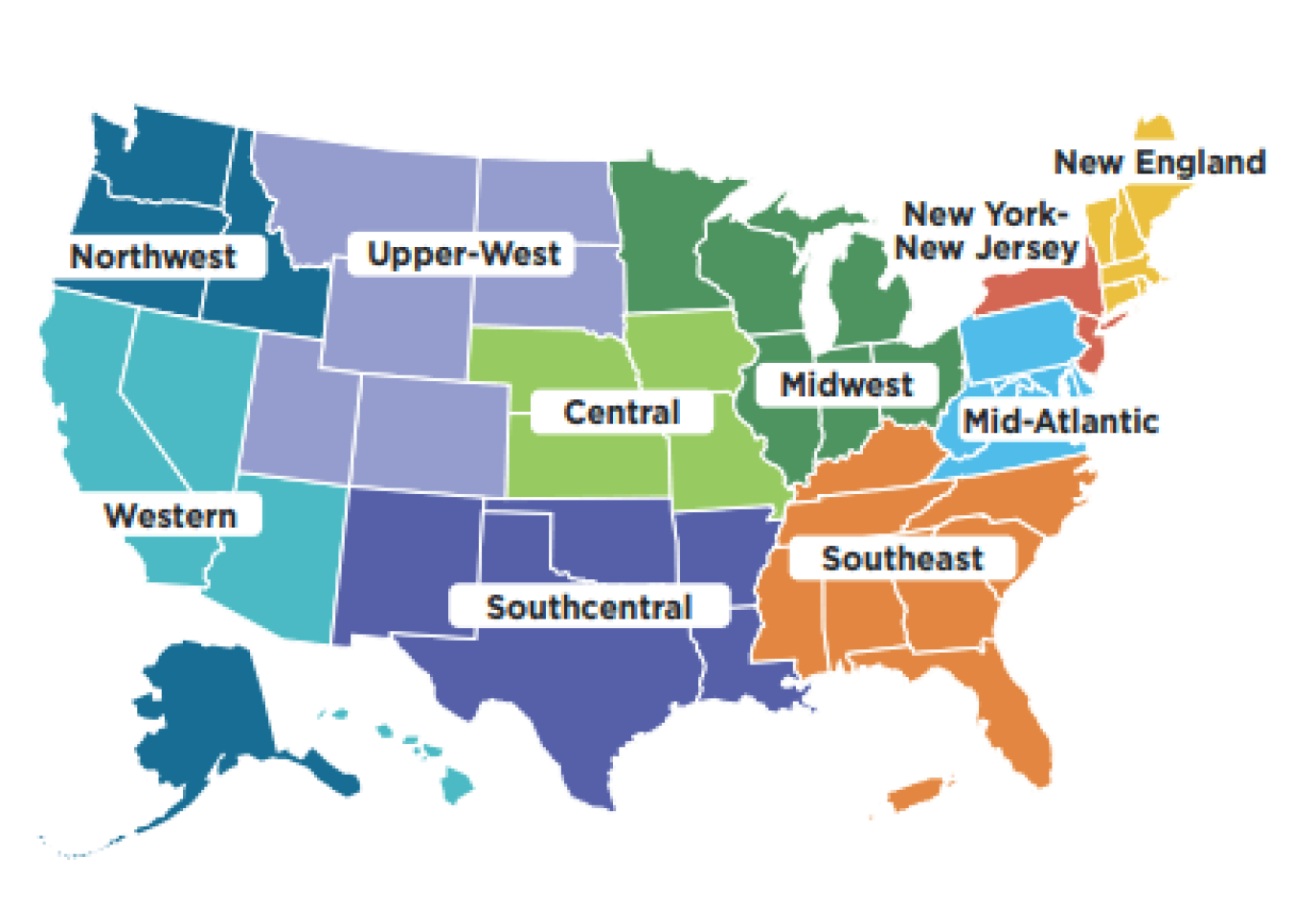Onsite Energy Program Quick Links
What Is the Onsite Energy Program?
The U.S. Department of Energy's (DOE) Onsite Energy Program provides regionally tailored technical assistance support for industrial sites, and other large energy users, installing electricity generation and storage technologies at their facilities. Increasing the adoption of onsite electricity sources like combined heat and power or thermal storage at industrial sites can enable electricity growth and support a resilient grid.
These "behind the meter" sources can decrease, or even eliminate, the amount of electricity that industrial facilities pull from the grid and provide more efficient, flexible, and affordable sources of electricity for manufacturers and data centers. By generating and storing electricity and heat onsite, manufacturing facilities can purchase energy when it is most economical, improving reliability, increasing flexibility, and reducing operating costs.
How Can the Program Help You?
As part of the Onsite Energy Program, DOE launched a network of Technical Assistance Partnerships (TAPs) to provide manufacturers with access to regional and technical expertise across the country. The 10 regional Onsite Energy TAPs help facilities integrate the latest onsite energy technologies by providing specialized services, including:
Technical Assistance
Screen sites for opportunities to implement onsite energy technologies and provide advanced services to maximize economic impact and reduce risk from initial screening to installation to operation and maintenance.
End-User Engagement
Partner with organizations representing industrial and other large energy users to advance the use of onsite energy to reduce costs and increase competitiveness of the industrial sector.
Stakeholder Engagement
Engage with strategic stakeholders, including utilities and policymakers, to identify and reduce barriers to onsite generation and storage through fact-based, unbiased education.
The TAPs have expertise to advise on a wide variety of onsite energy technologies, such as:
- Battery storage
- Combined heat and power
- District energy
- Fuel cells
- Geothermal
- Industrial heat pumps
- Renewable fuels
- Solar photovoltaics
- Solar thermal
- Thermal storage
- Waste heat to power
- Wind power
- And more!
The Onsite Energy TAPs also conduct education and outreach and engage with key stakeholders to identify pathways that could accelerate the integration of onsite energy technologies. These activities include developing regional resources, sharing best practices, and building partnerships that drive competitiveness across the U.S. industrial sector.
The TAPs were selected through a competitive DOE funding opportunity. Learn more about the TAP selections.
How Do I Contact the TAP in My Region?
The department's 10 regional TAPs cover all 50 states, Puerto Rico and the U.S. Virgin Islands. If you are interested in a TAP, find your regional contact, which are divided into the following groups of states and territories:

The Onsite Energy 10 regional TAPs cover all 50 states, Puerto Rico and the U.S. Virgin Islands.
- Central—Iowa, Kansas, Missouri, Nebraska
- Mid-Atlantic—Delaware, District of Columbia, Maryland, Pennsylvania, Virginia, West Virginia
- Midwest—Illinois, Indiana, Michigan, Minnesota, Ohio, Wisconsin
- New England—Connecticut, Maine, Massachusetts, New Hampshire, Rhode Island, Vermont
- New York and New Jersey
- Northwest—Alaska, Idaho, Oregon, Washington
- Southcentral—Arkansas, Louisiana, New Mexico, Oklahoma, Texas
- Southeast—Alabama, Florida, Georgia, Kentucky, Mississippi, North Carolina, South Carolina, Tennessee, Puerto Rico, the U.S. Virgin Islands
- Upper-West—Colorado, Montana, North Dakota, South Dakota, Utah, Wyoming
- Western—Arizona, California, Hawaii, Nevada.
Additional Information
The Onsite Energy Program is overseen and funded by DOE's Industrial Technologies Office. The TAPs are also supported by a trio of DOE national laboratories (the National Renewable Energy Laboratory, Oak Ridge National Laboratory, and Pacific Northwest National Laboratory) with subject-matter expertise in onsite energy deployment.
Visit the Onsite Energy website to:
- Learn more about the program.
- Explore technology areas.
- Find resources.
- Join upcoming events.
Contact OnsiteEnergy@ee.doe.gov with questions.


